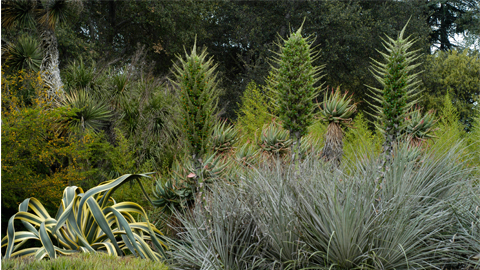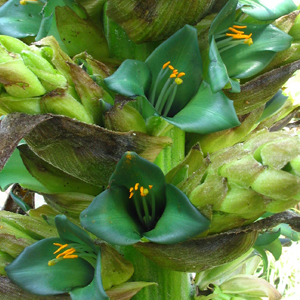The Huntington’s blog takes you behind the scenes for a scholarly view of the collections.
Four-Leaf Bromeliads?
Posted on Thu., March 17, 2011 by
Forget shamrocks. The best plant at The Huntington on St. Patrick's Day is a bromeliad. At the bottomof the Desert Garden is the giant Puya berteroniana, which amazes us each year at this time with green flowers. This year it began its bloom on March 1 and has produced some very tall stalks of pale teal and others of shamrock green.
The Huntington has more than 20 kinds of Andean puyas, from several sources—probably the finest collection in North America. A large collection came from James West, who was a member of T. Harper Goodspeed's expeditions to the Andes. Goodspeed wrote about those exploits in the botanical travel classic Plant Hunters in the Andes (1941). Myron Kimnach, the former botanical director of The Huntington, also helped expand the collection.
Puyas bloom from late winter throughout the spring,and come in a variety of spectacular colors, including brilliant yellow, teal blue, royal blue, green, purple, and near black. Amazingly, all puyas have a very special characteristic—after they bloom, their petals twist together, perhaps to protect the ovary from cold and insects.
You will soon be able to find a yellow giant, the Puya chilensis, along the west side of the Desert Garden. And Puya alpestris, the turquoise one, will soon be flowering on the central main path, at the entrance to Heritage Walk, which holds other puya surprises.
Joanne Gram is a docent in The Huntington's Desert Garden and the editor of The Jumping Cholla.

